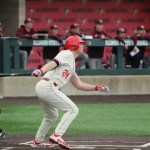
You Asked, We Answered: Ole Miss Men’s Hoops Q&A Ahead of Tip-Off

OXFORD, Miss. — The Ole Miss men’s basketball team is set to tip off what promises to be the most anticipated season of the Chris Beard era. The Rebels will host Southeastern Louisiana tonight at the Sandy and John Black Pavilion with tip-off slated for 7:00 PM CT.
Beard’s roster features a significant makeover, highlighted by eight incoming transfers — including AJ Storr, James Scott, and Travis Perry, three high school recruits (Niko Bundalo, Patton Pinkins, and Tylis Jordan), and the addition of international guard Ilias Kamardine. Returning contributors include preseason Second Team All-SEC forward Malik Dia, energetic defensive wing Eduardo Klafke, and sophomores Max Smith and Zach Day, who are entering their second season in Oxford. After a 2024–25 campaign that saw Ole Miss reach the Sweet 16 for only the second time in program history, the Rebels are poised to build on that success in Beard’s third season.
With that, we are tipping off basketball season with our own Q&A-style breakdown to get fans prepared for this season. The Rebel Walk took to social media to compile questions directly from the fans of the Ole Miss community about this year’s team, touching on a variety of topics including expectations, x-factors, minute distributions and more.
Now, let’s dive into your questions and explore what fans can expect from this year’s Rebels.
Disclaimer: This column reflects the personal analysis and opinions of the writer. All projections and evaluations are based on available data, preseason observations, and individual interpretation. A special thanks to all those who participated in sending in questions for this article.
What kind of minutes distribution should we expect? Are we to be worried at all about Perry/Kamardine’s defensive physicality?
This is a two-parted question regarding minutes and backcourt distribution. Starting off, regarding minute distribution, in order to understand what the potential minute distribution is, a look at the overall roster is required. In stops at Little Rock, Texas Tech, Texas and Ole Miss, Chris Beard has typically used between 8-11 guys who all play 5 > minutes a game. The ideal is hovering around that 10-11 player mark. This specific roster is arguably one of the deeper rosters that Beard has had and is certainly the deepest during his Ole Miss tenure.
There is no real way of knowing what the minute distribution for this team is going to be until Ole Miss trots out for its first regular season contest. This is most likely something I will be wrong about, and if we did this exercise five years over, I’d likely be wrong five times. It’s a fluid process with many variables. My expectation for the group is that the starters from the St. Mary’s game will be the starting five to tip-off the season. That group was Ilias Kamardine, Travis Perry, AJ Storr, Malik Dia and James Scott.
In my best guess, Kamardine, Dia and Storr all play 25+ minutes a game. That is a significant bump for Dia who averaged 20.9 minutes per game last season. Kamardine, while with the French club Dijon, played 18.2 minutes per game. With a deeper front court, I would expect to see a healthy mix of all three front court transfers in James Scott, Corey Chest and Augusto Cassia. The backcourt will feature Perry who adds a sharpshooting high IQ guard that looks to space the court distribute the ball and add a secondary scoring option who keeps the offense flowing while keeping defenses honest. Kezza Giffa, Koren Johnson, and Eduardo Klafke will compete along with true freshman Patton Pinkins. Giffa could be an interesting player to watch as the two-time All Big South team member could provide an offensive spark in the rotation.
Now to the question regarding defensive physicality, specifically in regards to Ilias Kamardine and Travis Perry. Starting off with Travis Perry, we know Chris Beard has publicly talked about his valuation of Perry.
“I can only speak for myself — Travis is more than a shooter. A shooter does not define what he can do on the court today and certainly what he will be able to do as he continues to grow as a player. He’s still a young sophomore in our league. But we have a major impact role for Travis.“
Chris Beard on Travis Perry
Looking deeper into this, Evan Miya gave Perry a DBPR of 0.04 for this upcoming season. The question is largely due to the physical limitations Perry possesses. At 6’1, without above average physical tools (lateral quickness, length, etc.), the question forms. Two elements stick out to answer this. Perry is an instinctual defender who now moves into a defensive schemed program. As a freshman, Perry did record 4 steals in a game against Alabama and is 9th all time in the state of Kentucky for career high school steals. Perry will have to maximize his positioning, alignment and defensive instincts to make proper defensive reads to have an impact on the defensive end of the floor. Chris Beard is no stranger to the Perry archetype either. In his Texas Tech tenure, both Matt Mooney and David Moretti grew on the defensive end under the tutelage of Beard and Mark Adams.
Switching gears to Kamardine before tying back to one overall point, Kamardine is thin weighing in at 185 lbs at 6’5. Conversely to Perry, Kamardine does have the physical tools to be a plus defender. While at the FIBA U20 Eurobasket, Kamardine led the tournament in steals per contest. He has been labeled a diisruptor whose length and lateral agility at the point of attack cut off drives and forced contested shots. On the perimeter, I have strong belief that Kamardine should be an impact in both an on-ball and off-ball role. As for any international player, Kamardine will have to adjust to more minutes on the court, a stronger pace of the game, and more physical isolation movements rather then a team focused game that is overseas but I believe the traits are there for him to excel.
For those who followed last year, Eduardo Klafke provided a big time defensive energy off the bench last season. It was his ticket onto the floor as the season went on. Eventually in March, there were situations where teams did use bigger guards to find mismatches and attack Klafke in the post. Teams also did this to Sean Pedulla and Matt Murrell as well. For Klafke, the lack of strength in the lower half, and frame in his core and chest did make this an area of concern as Ole Miss was in its NCAA tournament run. This same reason for Klafke is a concern also for Perry and Kamardine. Will the both of them have that strength with their legs to keep position down low, and can they use that chest to wall up or use the forearm for legal positioning? Basketball teams at most levels are getting a lot better at finding and exploiting those areas. Pedulla and Murrell showed the ability to wall up and stop those interior feeds and it could be a relatively small portion we see those situations but a scenario I did want to highlight nonetheless.
Do you expect any of the freshman to get any playing time?
Before I do my best to answer this question, let’s first discuss where the overall landscape of college basketball is. More international players are entering college basketball than ever before. Alongside a healthy amount of transfers, college basketball is at a place now where experience matters more than ever. It’s creating a completely different dynamic for the traditional high school route, one that affects the path to the court.
That being said, I think Patton Pinkins is a name to watch here. The lowest ranked of the three high school commits for the 2025 cycle and the son of assistant coach Al Pinkins, Patton stands at 6’5, weighing 200 lbs. Ole Miss is deep in the frontcourt and opportunity awaits in the backcourt. Pinkins did log some extended time in the scrimmage against Saint Mary’s, tallying 15 minutes on the court while attempting four field goals. With his dad being on staff, I would assume Patton has a good understanding of what Chris Beard is trying to accomplish from a schematic standpoint, and I’d be curious to see how quickly having a father at the NCAA level aids in getting adjusted to that landscape.
Going a little bit further here, there are six guards above the height of 6’1 on this roster. Ilias Kamardine, who will likely be featured in a more on-ball role. Eduardo Klafke, Hobert Grayson, AJ Storr and Max Smith make out the rest. Assuming a good bit of time goes to AJ Storr, I do find an interesting dynamic for back-up minutes if Ole Miss wants a bigger wing rotation piece. A situation where some minutes could be up in the air between Klafke and Pinkins.
What should the expectations be of Eduardo Klafke this year?
Klafke’s name has been brought up a bit in this article. Last year, he found time on the court with his energy on the defensive end. He held a spark that he could disrupt and do a lot of the little things to help create defensive “kills” (three stops in a row). Throughout last year, Klafke played 9.9 minutes a contest, averaging 1.4 PTS and 1.1 REB. His impact wasn’t one that was felt through the box score but rather an infectious style of play. While at Ole Miss and adapting to the NCAA style of play, Klafke prioritized defense and his perimeter shooting.
Now heading into year two, Klafke’s “expectations” or what we would like to see is the next step forward on the offensive end. In Brazil, he did have a little bit of work on the ball, creation we saw limited amounts of at Ole Miss last season. Adding some more on the offensive end to show growth would be a positive step for Klafke, being able to attack off of swings, tightening his handle, adding a mid-range pull-up or off action. Overall, he will be looking to develop a deeper arsenal of offense that can aid Ole Miss when he comes on the court, while also bringing the defensive energy and being a plus-shooter on the offensive end.
In your opinion what is the floor and the ceiling of this year’s team?
1) This is a second weekend tourney team on paper! https://t.co/6KFGiXLqL5
— T.J. (@TJOxley1) May 29, 2024
Last year, I was extremely lucky in calling Ole Miss a second-weekend team in the NCAA tournament. That being said, this year is a much deeper guessing game due to the aforementioned changes in the landscape of college basketball. Ole Miss is also probably one of the tougher teams to get a read on. The pros are that this a team that is very deep and can run a lot of different lineups and combinations. They have guys who can shoot, a wing who can score in volume, an international combo guard with a high pedigree and a frontcourt that returns a mismatch big and added some rebounding and rim protection. These are all things a team wants to have. The question is how does that all come together and does it? It’s not just adding pieces but making them fit also — something that Chris Beard understands well. Prediction models have Ole Miss finishing all over the board, but a lot of that may stem from questions over driving of the offense and scoring production.
For me, this team comes down to three things: Will it rebound at a higher level than last year? Is the combination of Storr, Kamardine and Dia enough of a starting scoring punch, and will someone come in off the bench who can create some offense? These questions lead me to Ole Miss having a second-weekend ceiling and an NIT floor. The SEC is a gauntlet, more so than it is has ever been. If the answers to questions here in November linger towards the new year without answers, that affects the ceiling of this team.
Who do you think is going to be the go-to scorer in late-game situations?
The answer lies in three players: Ilias Kamardine, AJ Storr and Malik Dia. It is tough to find situations to get primarily bigger forwards the shot they want if it’s a last shot scenario. This adds pressure to the backcourt, pressure we saw Sean Pedulla go up against time after time. This year, I believe it goes down to Kamardine and Storr primarily. I think late-game offensive playmaking needs to go through Kamardine, but in a playmaking creation sense. The team needs to get Kamardine the ball to work into the paint to force defensive help, keep the ball moving and even attack into the lane or for a floater. Kamardine would be a top option. He has the athleticism, the ability and the experience at a higher level to be the guy to create down the stretch.
AJ Storr would be the guy if you need a bucket and the defense is going to be all over. Storr has a versatile game, from stepping out to the perimeter to using footwork for lane spins, mid-post fadeaways and shouldering defenders for buckets through contact. A volume scorer, Storr provides the scoring punch and the ways to do it that you look for when you need a shot.
Is Ilias Kamardine a true PG or will Giffa/Johnson be filling that role?
Kamardine is a true combo guard. Yes, he can operate on the ball, and it’s a role I think we will see a lot of from him this season. He also is effective off the ball. Coming from Dijon and the overseas game, international basketball has a different pace to it. There is more skill development, ball movement and a focus on different things compared to the American game. During that you got to see more glimpses of on-ball play but also a lot of time off the ball for both club and country play. As it stands, I would expect Kamardine/Perry to sort of split the duties of a PG on the court. Think of it more as the point guard mindset rather than the position itself. Beard preaches versatility for his team. Having Malik Dia who can at times have an offense run through him also aids in this effort.
As the question relates to Giffa and Koren Johnson, Giffa fits as a guy who could heavily feature the ball in a rotation role. During his two seasons at High Point, Giffa was a top-10 player in usage both years. While I do think he has the ball in his hands, it fits more as a driver of offense in a shot creation role. Giffa plays the game at his own methodical pace, looking to get to his spots and react to defensive pressure.
Johnson on the other hand fits better off of secondary action. Lightning quick with the ball in his hands, Johnson would be someone who could attack off swings, get to his pull-up jumper and at times operate as handler in ball screens. Along with several others, we really won’t know what the rotation or minutes looks like for Johnson til we see it later Monday evening, but he fits the bill of a guy who can be a microwave scorer that could give a team a push forward when needed.
Who do you anticipate being the highest-impact transfer outside of Kamardine? / Who’s the biggest X-factor for Ole Miss hoops this season?
I’m combining the two because my answer wouldn’t change depending on the phrasing of the question. The highest impact and biggest x-factor does include two different sentiments. The highest impact being the player who can change a game with his presence on the court and the x-factor being the player who can alter the ceiling of this Ole Miss team. Transfer forward Corey Chest fits that bill for me.
The transfer from LSU adds a different element then his frontcourt counterparts with his twitched up style of play. A high-motor big who can get out and really run in transition, he finishes lobs, slashes on cuts, was 3rd in the SEC in offensive rebounding percentage, and made a positive impact for LSU last year. On defense he shows the versatility that Chris Beard likes from a big as he can cover ground quickly thanks to that quick burst paired with an explosive leaping ability. Chest can step out and hedge screens with active hands forcing a few turnovers/steals (15 last season), and is also one of the top returning rim protectors in the SEC. His 6.2 BLK% was 8th in the SEC last year. The one correlation from his time at LSU was that he shot 60.7% from the field last year. In games where he shot >67% (knowing that Chest takes high % looks) LSU was 8-1.
The reason for Chest being an x-factor isn’t just the athletic gifts listed above, but also how he impacts not only this team but the others on it. Ole Miss could be more of a transition team with him in the lineup, and it would benefit players like AJ Storr and Ilias Kamardine. The offensive rebounding can create second-chance opportunities which could be kicked out to high level shooters like Perry or Klafke. Chest’s rim protection paired with fellow transfer James Scott creates a longer period of coverage that Ole Miss didn’t have in year’s past. He also rebounds extremely hard an if you took the per/40 of his stats last year he would average 13+ rebounds a game.
At the end of the day, this is a player who can change how Ole Miss plays the game and can impact in a variety of ways. And while he may not always be the highest in the stat sheet, Corey Chest is one to buy stock in.
Next Up
Ole Miss opens the season Monday night in the Sandy and John Black Pavilion against Southeastern Louisiana. Tipoff is set for 7:00 p.m., and the game will be streaming on SECN+.
TJ Oxley is the Vice President of Operations and the Director of Community Relations for The Rebel Walk. He is also the Director of Basketball Content and Senior Basketball Writer. He has over five years of experience providing in-depth analysis of college basketball through multiple platforms. A former MBA graduate of Ole Miss, TJ started with The Rebel Walk in 2019.






















